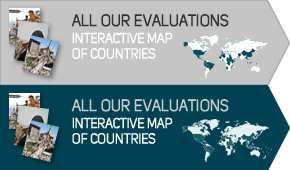Description of project
The purpose of this evaluation was to assess the progress made towards enhancing resilience and reducing vulnerability to natural disaster of the most at-risk populations and the institutions of Central America. The focus was on reviewing DIPECHO and measuring the impact of its projects in terms of how well preparedness helped the population when they were afterwards affected by disaster. This implied gathering information on the level of preparedness before an intervention and on this basis determining how DIPECHO projects have contributed to change: identifying both the assessment and reach of this change.
Based on the briefing in Brussels and a desk review, the evaluation team carried out a mapping process of DIPECHO funded projects in Central America per DIPECHO Action Plan (including implementation period), sector of intervention according to listing of Fifth DIPECHO action plan and Hyogo priorities for action, country (and region), type of hazard risk and disaster affected, implementing partner and budget. The process sought to identify areas or communities that were affected by disasters after a DIPECHO intervention. These would provide potential case studies to enable the team to evaluate the impact of DIPECHO projects.
In parallel, the team developed a list of key evaluation questions (based on sample criteria and questions as relevant for DIPECHO in Central America) and gathered information to establish baseline data on disaster preparedness and disaster risk reduction levels in 1998 and in subsequent DIPECHO Action Plan implementation periods. Specific data was sought to focus on levels of resilience and vulnerability of most at risk populations of Central America and the institutions (regional and national disaster management entities).

Share this